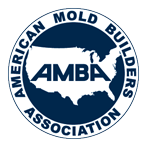By: Tom Ziegenhorn
January 12, 2011
Product designers/inventors can spend countless hours developing their concepts without fully understanding the manufacturing process that goes into mass producing their parts in the most cost-effective manner. Matrix Tooling, Inc. & Matrix Plastic Products excels at consulting with our customers, from Fortune 100 companies to individuals with breakthrough ideas, to provide manufacturing insight during their product design stages. Sometimes we begin with nothing more than a simple sketch concept of a part. Often, there can be multiple ways of getting from that initial concept to the finished product; our job is to explain those options to our customer and help them select the one best suited to their application.
Several factors can impact the ability to design & build a functioning tool that will efficiently produce a plastic part. Something that might seem like a simple feature might actually involve complicated tooling mechanics to achieve in the molding process. As the custom manufacturer, it is our responsibility to point out the most economical way to accomplish this. So when customers share the mechanical requirements and intended use of their product with us before the part design is frozen, it allows for some discussion of which features are set in stone and which may offer some flexibility. This makes it possible for us to pinpoint suggestions that may significantly impact tooling and/or production costs.
Take snaps for example. Snaps can be achieved by various means. Coring an opening through the part, allowing for the removal of the trapped plastic, is the least expensive option. Depending upon the application, this may be a perfectly acceptable choice. However, if this is not desirable from an aesthetic standpoint, snaps can also be achieved mechanically using lifters or slides, which add more expense and require more labor (as well as more mold maintenance down the road in production.) Both tooling methods will create the snap, but ultimately the customer’s needs and budget will determine which route we take in designing the mold.
During this critical stage – before significant investments of time and money have been made - is the time to consider the many options that affect the function, lead time and cost of tooling: gating location, parting line location, draft, processing behavior of the selected resin, just to name a few. Involving Matrix at this point is a win-win because it ensures the most efficient use of both parties’ available resources: we help confirm that the part design is within an acceptable range of manufacturability, which helps our customers avoid misunderstandings and costly re-designs down the road.
_horizontal_white_536x129.png)

